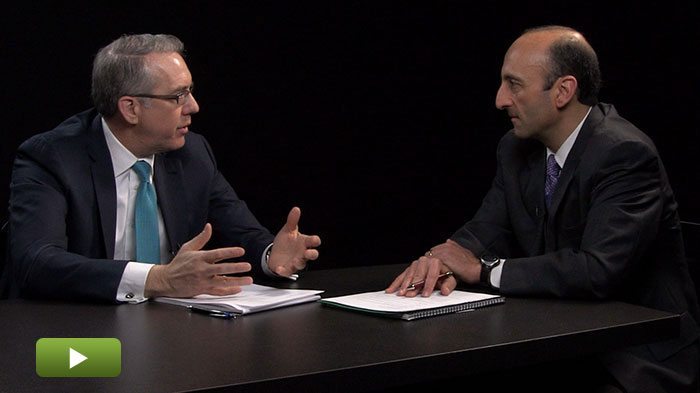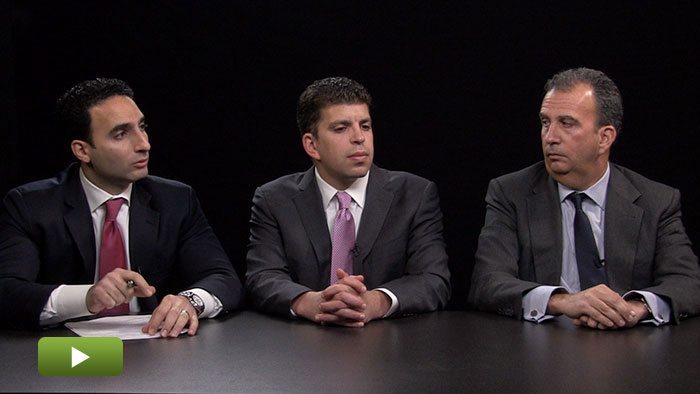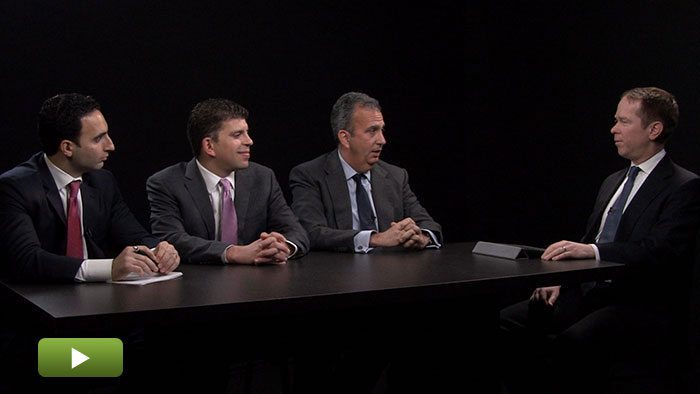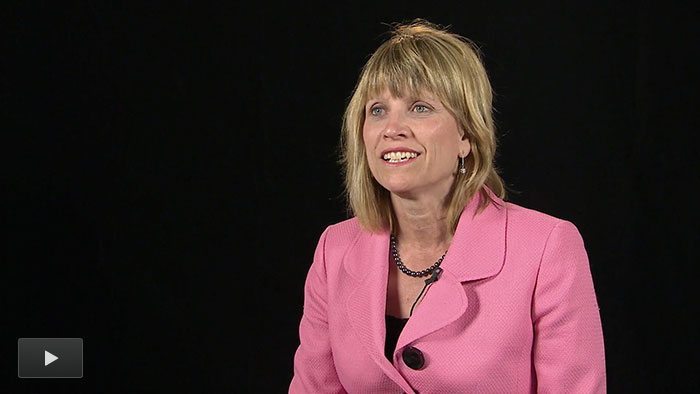The Future-Proof LPA
Experts from Gen II Fund Services, Credit Suisse Private Funds Group, and Kirkland & Ellis LLP discuss whether it’s possible to build a bulletproof limited partner agreement. Also: the pros and cons of putting too much detail into the LPA.
Transcript Download Transcript
The Future-proof LPA
Private Equity Fund Formation
David Snow, Privcap: Today, we’re joined by Raed Elkhatib of Credit Suisse Private Fund Group, Robert Blaustein of Kirkland & Ellis, and Steven Millner of Gen II Fund Services. Gentlemen, welcome to Privcap. Thanks for being here.
When negotiating between LPs and GPs, it’s important to get everything right; that is spelled out in the limited–partnership agreement. It’s the document that governs the relationship between the GP and the LP. Let’s talk about how to get fees structured, described and agreed correctly in the LPA, and the extent of disclosure that is necessary or recommended. How much detail should be people get into? What is the upside and downside of getting into that much detail?
Rob Blaustein, Kirkland & Ellis: The SEC has clearly shown a preference for more detail and specificity. LPs are, to a degree, accepting of that. They may want to have a discussion about it, but I think there is a sense of baskets of fees that have been and have been charged through with general terms and are now being listed more specifically. LPs are smart and they realize that’s not a change. Because you spend a lot of time with the LPs now, fighting over new language, over carve outs or over baskets. You want to be fighting for things that matter to your sponsor, not for things they can get that don’t matter.
Snow: Are you saying there is a downside to spelling out every single kind of fee that could be taken, for example?
Blaustein: If you can get away with it, that’s great. [When] I say “get away with it,” I mean that if LPs are accepting of it and get it as part of your model or as part of the market, that’s great. When you get to the point when you’re trading off real points and real flexibility you need in order to keep something you may not, there is certainly a downside.
Snow: Steve, you’re in a unique position to see all of these documents come across your desk that govern the way these funds operate. I take it you’ve noticed an increase in complexity and just sheer size and weight of these documents. How does that make life more difficult for the relationship between the LP and the GP?
Steven Millner, Gen II Fund Services: Certainly, the volume of disclosure in the limited–partnership agreement has increased, especially as it relates to fees and the offsets we talked about, as well as expenses. Basically, the bottom line is: does the fund sponsor pay for these certain expenses or do the LPs pay? That area of expenses specifically has become much more robust—it’s a long list with lots of semicolons. And that list is increasing but, as Rob said, you can’t be bulletproof or future–proof. FATCA is a great example; it is a new rule that just took effect this year. But it’s for all funds that are in the market so, three or four years ago, there was no such thing as FATCA. So, what do you do now? There has to be some language in the document that protects both parties with an understanding of how these types of expenses are going to be borne and who is going to bear them.
Raed Elkhatib, Credit Suisse Private Fund Group: The interpretation or the simplification—that’s critical. Get more transparency and more disclosure and understand, as we always say, “The devil is in the details.” What does this mean for me? What are the implications to me as an LP and to GPs?
Snow: Is there a FOIA risk in adding so much detail and specificity to the LPA regarding different fees that could or could not be taken and the headline embarrassment risk that comes with it?
Elkhatib: This goes back to [the fact that] it’s hard to innumerate every single expectation. It goes back to almost the old accounting rules. You have a principles–based type of architecture or something more specific. Maybe a principles–based type of format would make more sense, again, with the knowledge that it’s hard to predict every single circumstance, especially if you go through a market event like we went through during the financial crisis.
Snow: Steve, you mentioned future–proofing the LPA or an attempt by some to future-proof it. Is that something that comes up in the negotiations or in the minds of your clients—that they’d like to have a document that is going to be flexible regardless of what new regulations or rules pop up over the next 10 years?
Blaustein: You don’t know what market trends are going to be or what fees are going to be. But I went snorkeling recently and I signed a disclosure. It was in another country, and the disclosure said, “This is a dangerous activity and you may be killed or injured.” It didn’t list every way that I might be killed or injured or I might be attacked by a shark or a turtle.
Snow: What kind of shark?
Blaustein: Exactly. So, I don’t think the place that made that disclosure was worried about if [they] listed 27 things and the 28th one got me, I’d come back and say, “I didn’t know that was going to happen.” And there is a risk that the more specificity you provide, the more it gets difficult to say you’re talking about the spirit of the agreement.
Millner: How do you deal with where the SEC is in terms of how they’re looking at clients, as opposed to the LP/GP relationship?
Blaustein: You see where the trends are and you also see what the SEC is saying. Then, you use it as a feedback loop. There have been a lot of sponsors that have gone back after the SEC has come in and said, “We didn’t like X, Y, Z. We think you shouldn’t have done this. We think your LPs didn’t know about this.” In many cases, when the sponsors brought that back to the LPs or the advisory committee, they got quick sign–off on it, or they came to a quick resolution of how to deal with it going forward.
Snow: It sounds like we’re a ways off from there being standard language and terms with regard to these fee disclosures. Is that correct, Raed?
Elkhatib: I think so. Again, there are a lot of different organizations, by size, by strategy, by geography—a lot of complexity. It has to be a nuanced, specific conversation to who the GP is, what they do and how they deliver returns for their investors. Because of that, there is not one homogeneous set of terms that works for all situations.







